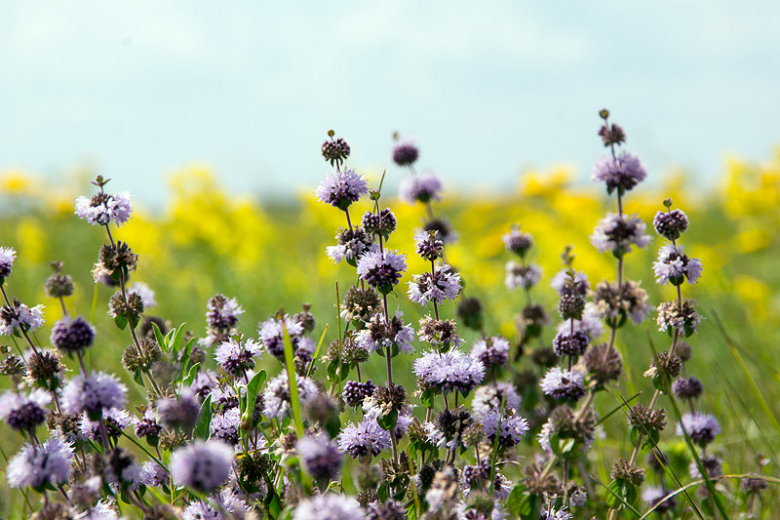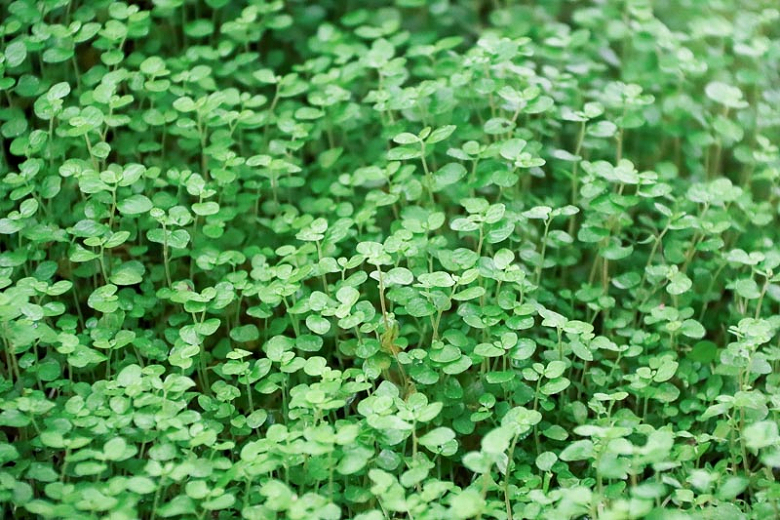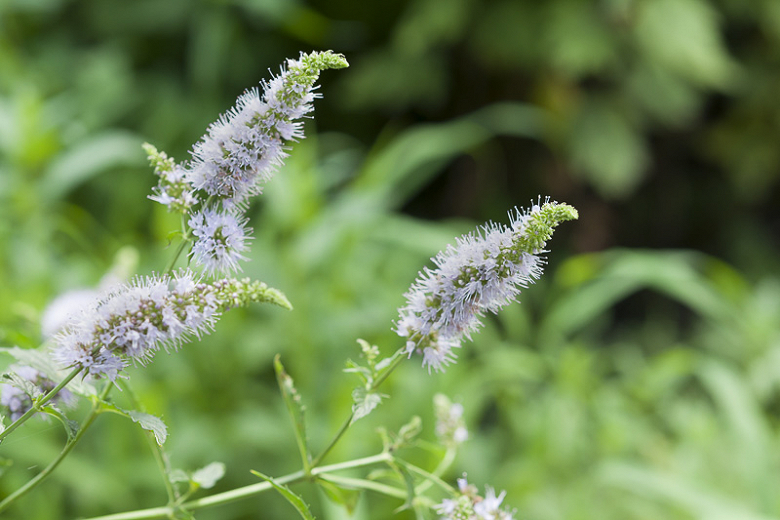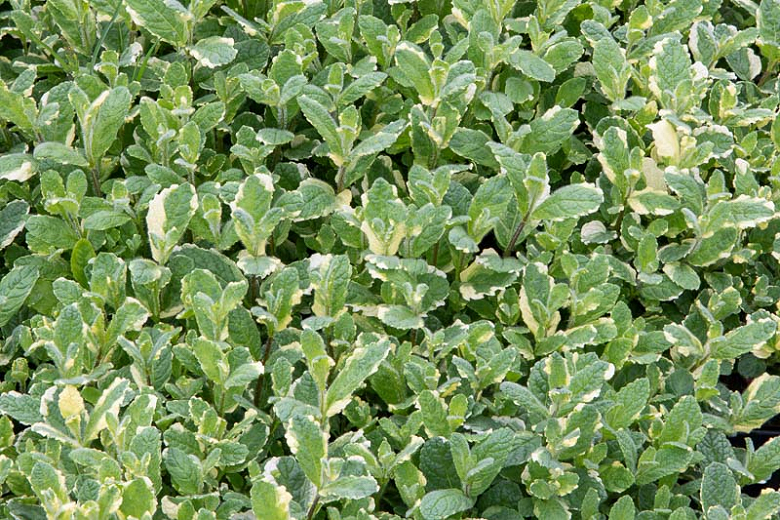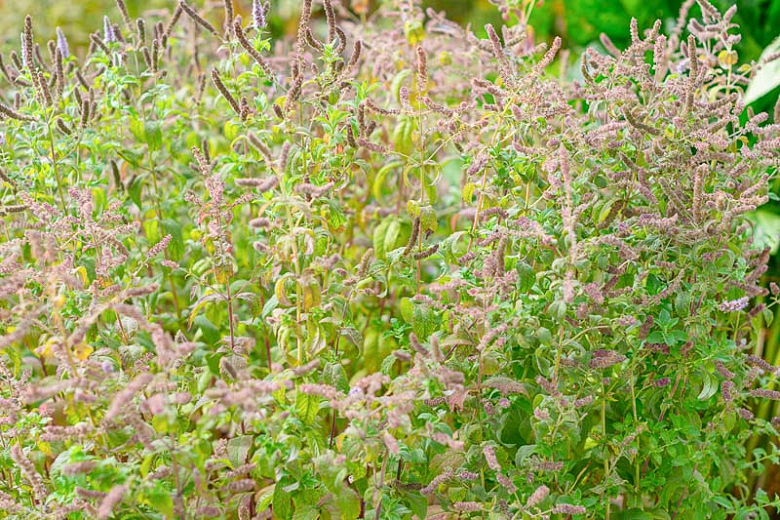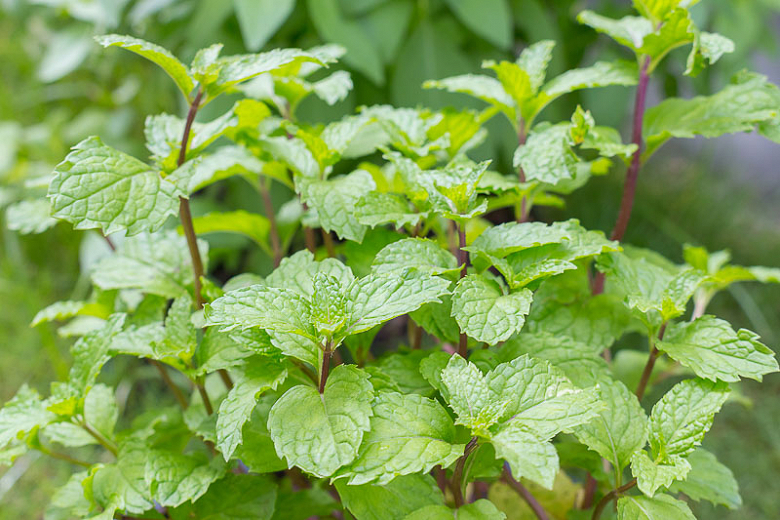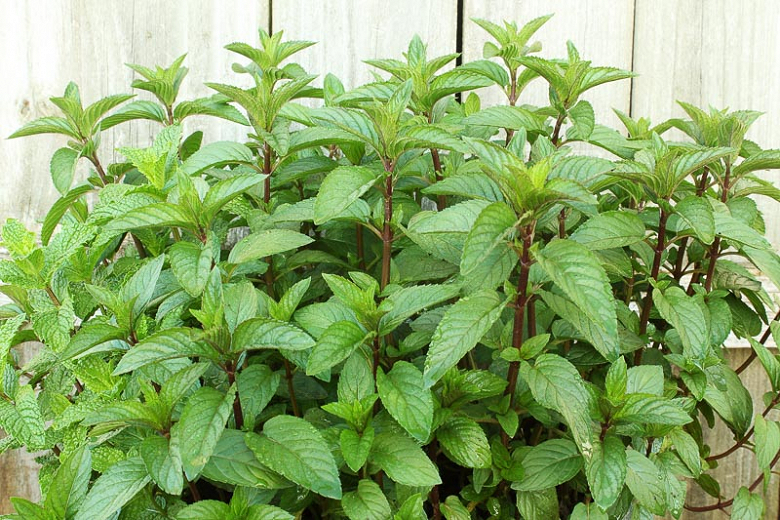Mentha pulegium (Pennyroyal)
Mentha pulegium, also known as Pennyroyal, is a fast-growing, creeping perennial forming dense mats or small, narrowly oval leaves that are powerfully spearmint scented. It is a traditional folk remedy used for medicinal purposes for centuries, including as a treatment for digestive issues, pain reliever, and insect repellent.
Mentha pulegium, also known as Pennyroyal, is a fast-growing, creeping perennial forming dense mats or small, narrowly oval leaves that are powerfully spearmint scented. Tiny lilac flowers are produced in whorls in summer. Native to Europe, North Africa, and the Middle East, Pennyroyal is a traditional folk remedy used for medicinal purposes for centuries, including as a treatment for digestive issues, pain reliever, and insect repellent. However, Pennyroyal is toxic when consumed in large quantities and should not be used as a medicinal herb without the guidance of a healthcare provider.
Growing Pennyroyal
- Grows up to 6-12 in. tall (15-30 cm) and 3-6 ft. wide (90-180 cm).
- Performs best in moist soils in full sun or partial shade.
- Extremely easy to grow, Pennyroyal is a spreading plant that can quickly take over an area and could become invasive.
- You may want to plant it in raised beds, pots, or containers to keep it within bounds.
- Regular watering will keep Pennyroyal healthy and promote abundant growth.
- Pennyroyal does not require a lot of fertilizer to grow well. You can use a balanced, all-purpose fertilizer during the growing season. Alternatively, provide extra nutrients by incorporating compost or well-rotted manure into the soil before planting or using a side dressing of organic matter during the growing season.
- Over-fertilizing Pennyroyal can result in excessive growth at the expense of flower production, so it is important to use fertilizer sparingly and only when necessary.
- Pennyroyal can be harvested for its leaves throughout the growing season, but it is best to avoid harvesting too much at once to prevent stressing the plant.
- The leaves, fresh or dried, can be placed in pest-prone areas to deter garden pests.
- No serious pest or disease issues. Check out for leafhoppers, caterpillars, powdery mildew, or mint rust.
- Pennyroyal has been used for centuries as a natural insect repellent. The strong, minty fragrance of the plant is believed to repel a variety of insects, including mosquitoes, flies, and ants.
- To use Pennyroyal as an insect repellent, you can crush the leaves in potpourris or make a tea and use it as a spray or lotion. However, it's important to note that Pennyroyal oil can be toxic if ingested and should not be used on children or pets.
- Mint is deer and rabbit resistant and toxic to cats, dogs, and horses if ingested. Fresh or dried leaves of Mints repel mice and rats.
- Mint may cause allergic reactions in some people.
- Cut back after flowering.
- Propagate by division in spring and fall.
- Find where this species is invasive in the United States.
Companion Planting
Requirements
| Hardiness | 6 – 9 |
|---|---|
| Climate Zones | 4, 5, 6, 7, 8, 9, 10, 11, 12, 13, 14, 15, 16, 17, 18, 19, 20, 21, 22, 23, 24 |
| Plant Type | Herbs, Perennials |
| Plant Family | Mentha – Mint |
| Exposure | Full Sun, Partial Sun |
| Season of Interest | Summer (Mid,Late) |
| Height | 6" – 1' (15cm – 30cm) |
| Spread | 3' – 6' (90cm – 180cm) |
| Spacing | 24″ (60cm) |
| Water Needs | Average, High |
| Maintenance | Low |
| Soil Type | Chalk, Clay, Loam, Sand |
| Soil pH | Acid, Alkaline, Neutral |
| Soil Drainage | Moist but Well-Drained, Moisture Retentive, Poorly Drained |
| Characteristics | Fragrant, Showy |
| Tolerance | Deer, Rabbit, Wet Soil |
| Attracts | Bees |
| Garden Uses | Bog Gardens, Ground Covers, Ponds and Streams, Rain Gardens |
| Garden Styles | Informal and Cottage |
